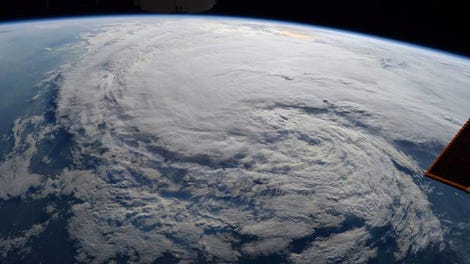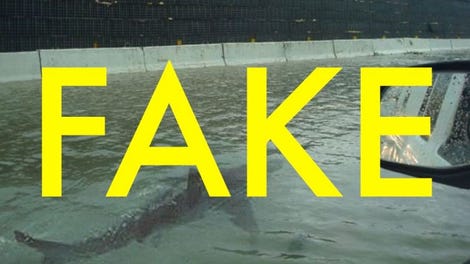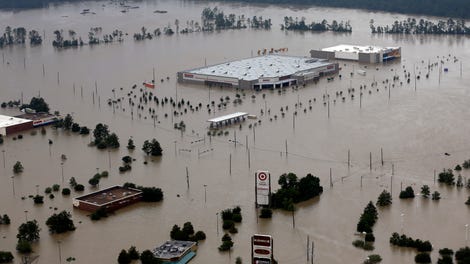
As Hurricane Harvey’s floodwaters begin to slowly recede from Houston, leaving behind at least 23 dead, residents and authorities alike are only beginning to assess the surreal extent of the damage throughout the region. That includes the country’s largest refining and petrochemical complex, which experts have warned for years would be a serious hazard if the area was hit by something like Harvey.
It wasn’t just doomsaying. A flooded Arkema SA chemical plant in Crosby, Texas is almost certainly going to explode within six days, Arkema North America CEO Richard Rowe told CNBC, and staff have no ability to stop the detonation from occurring.
Crosby is just over 24 miles northeast of downtown Houston.
In a statement on Arkema SA’s website, Rowe apologized to local residents and explained:
We have lost primary power and two sources of emergency backup power. As a result, we have lost critical refrigeration of the materials on site that could now explode and cause a subsequent intense fire. The high water and lack of power leave us with no way to prevent it. We have evacuated our personnel for their own safety. The federal, state and local authorities were contacted a few days ago, and we are working very closely with them to manage this matter. They have ordered the surrounding community to be evacuated, too.
Vice wrote the chemicals in question are the facility’s stockpile of organic peroxides, highly volatile substances used in the production of rubber and plastics. Organic peroxides were one of the materials used to craft bombs for ISIS attacks in Paris and Brussels, and need to be kept at a safe temperature or will catch fire and detonate.
Advertisement
Rowe told CNBC remaining staff were evacuated on Tuesday, and the evacuation perimeter around the plant has been expanded to one-and-a-half miles.
KHOU reported Environmental Protection Agency officials estimate approximately 1,300 households with 3,000 residents are within a three-mile radius of the facility. Per the station, the toxic mix of chemicals stored onsite include “acetone, benzoyl chloride, chlorodifluromethane, cumene, cumene hydroperpoxide, DI(2-ethylhexyl) phthalate, ethybenzene, ethylene glycol, hydrochloric acid, mercury, methyl ethylketone, n-hexane, sodium hydroxide, sodium sulfate, sulfuric acid and butyl alcohol.”
Advertisement
Rowe declined to tell CNBC what quantity of those chemicals remained at the Arkema SA plant, but said he is “comfortable” with the 1.5-mile evacuation zone and the company does not expect the explosion to have any “long-term harm or impact” beyond an “intense fire.”
According to the Houston Chronicle, the facility was flagged in prior analyses by the paper and the O’Connor Process Safety Center as a potential risk to the surrounding region during an emergency.
“It’s impossible to predict with 100 percent confidence a situation like this,” Rowe told the Chronicle. “No one anticipated six feet of water.”
But Sam Mannan of Texas A&M University’s Mary Kay O’Connor Process Safety Center rebutted that point, telling the Chronicle Arkema SA could have neutralized the organic peroxides beforehand.
“You’ll lose the feedstock, but it’s safer than letting it go into runaway mode,” Mannan said.
“You get out and try not to be downwind,” an anonymous worker from a neighboring chemical plant told the Washington Post.
Advertisement
Earlier this year, President Donald Trump proposed abolishing the US Chemical Safety & Hazard Investigation Board, a small federal agency responsible for investigating industrial accidents involving hazardous chemicals and passing those findings on to industries, regulators and safety officials. According to Chemical & Engineering News, White House budget documents for fiscal year 2018 suggested the agency’s mission of preventing industrial disasters was less important than deregulation.
“While CSB has done some outstanding work on its investigations, more often than not, its overlap with other agency investigative authorities has generated unhelpful friction,” the budget request stated. “In recent years, CSB’s recommendations have also been focused on the need for greater regulation of industry, which has frustrated both regulators and industry.”
Advertisement
Though Trump’s budget request cited “critical reports” by the EPA’s Inspector General as reason to slash it from federal expenditures, a 2017 report by that office said “budget and resource constraints” were hampering the CSB’s ability to “attract, hire, retain and train qualified staff.” The report also noted the “CSB budget has not increased in about 15 years,” impeding “its ability to adequately respond to chemical incidents.”


















